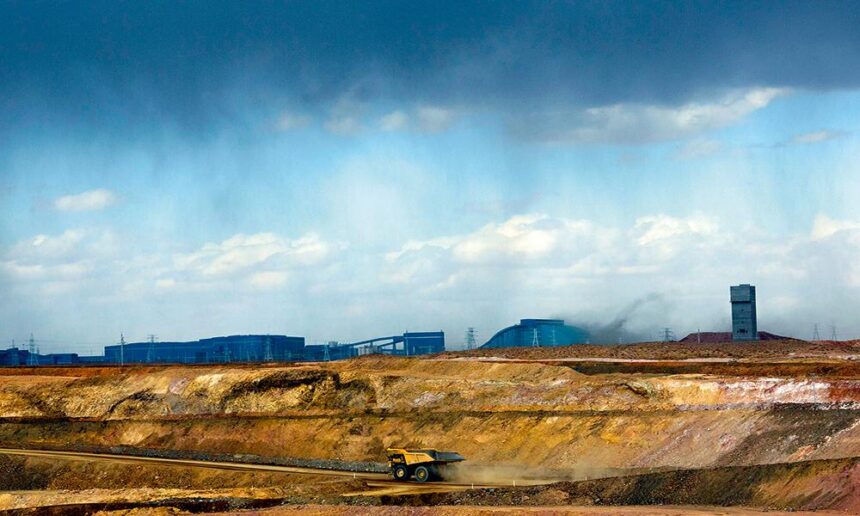Today neither Mongolia nor her economy can be fathomed without our mining sector. Mining accounts for 86 per cent of our export revenue, 71 per cent of industrial revenue, 18 per cent of the economy, and 30 per cent of budget revenue. In 2014, Mongolia earned 4.6 trillion MNT from sales of 1.2 million tonnes of copper, 1.4 trillion from 25 million tonnes of coal, and 543 billion from 7.5 tonnes of gold. The Mineral Resources Authority of Mongolia reported that the revenue from these three commodities reached 6.5 trillion MNT in total, which comprised 90 per cent of all mineral exports.
It begs the question why one third of Mongolians are living in poverty when our revenue is that high. Why is our government asking for funding from other countries and risking the future by issuing bonds, obtaining loans, and repeating it to pay back previous debts?
Our mining sector, which is expected to spearhead the development of our country, has had a vastly underwhelming performance so far. The culprit, of course, is not the mining sector, but its governance.
Natural resource governance
The Natural Resource Governance Institute (NRGI) has published its 2017 report on Mongolia’s resource governance. The report assessed resource governance in 89 countries and had three index components. Mongolia’s average score in these components (value realization, revenue management, and enabling environment) was 64 out of 100 points, which placed us 15th out of the 89 countries. (More information at www.resourcegovernanceindex.org)
Mongolia scored 63 in realizing the value of our natural resources. The assessment was that, although Mongolia has legislation and standards in place, the application is not consistent. It also said that the value that goes to people is unequal, and the social costs of delivering the value to the doors of households are high. The assessment was developed on subcomponents ‘licensing’, ‘taxation’, ‘local impact’, and ‘state-owned enterprises’.
On the side of licensing management for exploration and mining, Mongolia scored 61 points. The Mineral Resources Authority of Mongolia has been issuing licenses to mining companies on a first-come, first-served basis, and through a tendering process sometimes. Although the process of granting licenses is transparent on the web, it takes a lot of time and effort to get the required signatures from local authorities. Information on valid licenses can be accessed on the website of the cadastral authority. However, licenses contain information only on the aggregate sum of funds rather than the quality of the scoped work. In 2014, 497 privately owned companies carried out 62 exploration projects with government funding in 802 licensed areas. Mongolia scored 82 points, which was the highest in ‘open data’, because our policy on taxation is relatively clear and supervised by the Mongolian National Audit Office. Detailed information is included in the reports prepared by Extractive Industries Transparency Initiative (EITI), but sometimes it does not make the deadline.
Mongolia’s score of 40 in ‘state-owned enterprises’ put us in the 7th place out of 9 Eurasian countries. Erdenes MGL company was established in 2007 with the objective to manage the interests of government in strategically significant deposits. The company now owns shares in five biggest mining projects in Mongolia. However, Erdenes MGL does not disclose its financial, production, and sales information to the public. The parliament does not ask for or require such information to be revealed. The lack of information also makes it difficult for the public to provide oversight on the company’s operations.
Mongolia has an average score (54 points) in revenue management. Despite relative transparency of the public budget, it is amended once or twice every year. It is forcing regular changes to the 2010 law on public budget stability and other regulations on debt, balance, and spending. Currently there is no website that provides timely reports on the revenue each sector is earning and how much debt they have.
Mongolia’s natural resource sales comprised 90 per cent of exports, which made Mongolia the most dependent country on commodities out of the 49 nations in EITI. Furthermore, given our budget revenue is almost fully dependent on prices of coal and copper, Mongolia’s economy is the least diversified in Eurasia.
Mongolia has been allocating revenue from mining to people in the form of cash, and has occasionally suspended it due to high expenditures. This was deemed somewhat transparent, and was ranked in second place after Brazil. Mongolia used to distribute the funds generated from natural resource revenue at aimag and soum levels through royalties and licensing. However, it has stopped almost completely. There have been complaints that some soums are not getting anything from the resources mined from their territory. A clear example is Matad soum in Dornod province, where oil is extracted.
The Ministry of Environment and Tourism has a dedicated website to publish environmental impact assessments. However, the companies co-owned by Erdenes Mongol state enterprise are not fully in compliance.
The Budget Stabilization Fund established in 2010 scored 42 points and was ranked 18th out of 34 countries. This fund does not publish any reports and operates free of oversight from the parliament. The only piece of information comes from casual posts on the Ministry of Finance website.
A Future Heritage Fund was founded early this year in order to accumulate revenue to benefit the future generations in long term. But the fund has not published its quarterly and bi-annual reports as stated in the law.
Mongolia scored 73 points in ‘enabling environment’ for mining. Even though information and regulations on mining are relatively accessible, they have not caught up with the speed of how things are going today. The structure of our government and ministries undergoes constant change, which entails changes in policies. Therefore, it is extremely difficult to create a favorable environment for mining and to attract foreign investment. This was not mentioned in the report, hence the relatively high score.
Mongolians have not really entered the international market, except for cashmere. On top of poor governance, it is part of the reason why our economy is unable to reinvigorate.
Today our government is increasing its spending and has not put up a strong fight against corruption. It has allowed the budget deficit to keep expanding, and keeps forcing Mongolia to beg for financial assistance from other governments.
(To be continued)
2017.11.29












